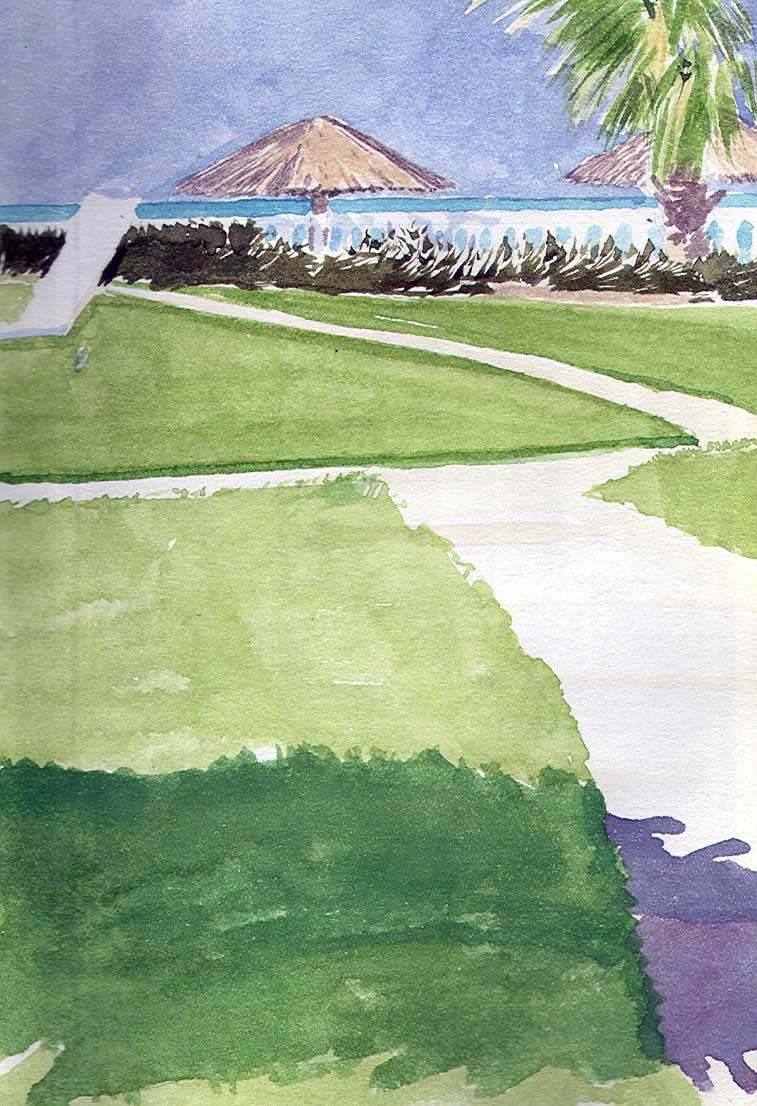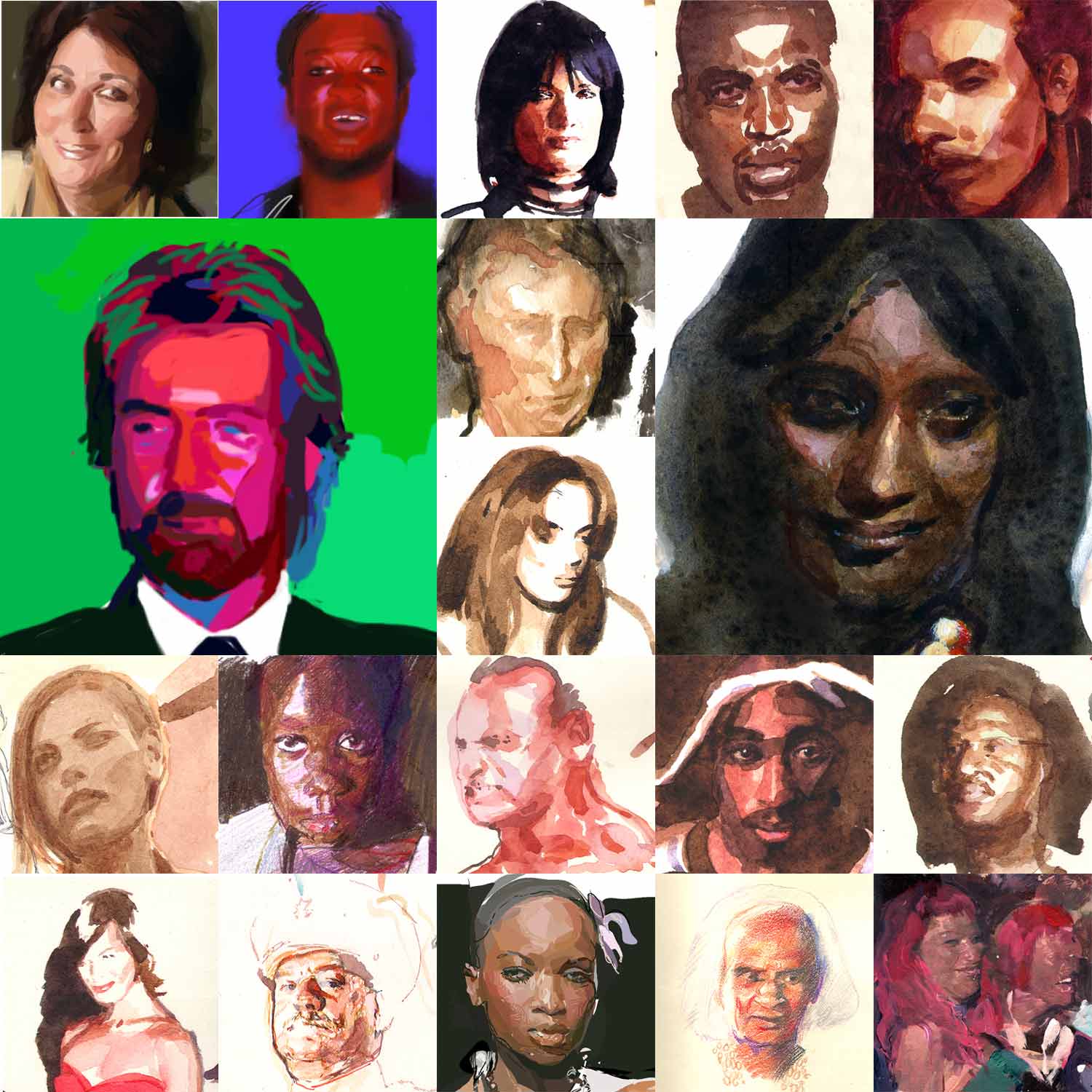


Travel
The pictures here are almost all done in a very small sketchbook whilst I’m travelling.
They are mostly done in watercolour, or on an iPhone or a medium other than oil (which I usually work with in my studio). They are experiments in colour and light and the new techniques learnt from doing them often find their way back to how I work with oil paint in my portrait work.
Travel
The pictures here are almost all done in a very small sketchbook whilst I’m travelling.
They are mostly done in watercolour, or on an iPhone or a medium other than oil (which I usually work with in my studio). They are experiments in colour and light and the new techniques learnt from doing them often find their way back to how I work with oil paint in my portrait work.

Heads
Being a portrait painter there are two things I consider when drawing or painting a head. Firstly, the forms of a persons face and secondly the facial expression.
Over the years I have employed methods of measuring distances between facial features when painting, this really helps. However, there are subtleties to faces and expressions that mean conscientious measuring is simply not enough. I found by continually drawing many heads in my sketchbook the whole process becomes more natural,automatic and my touch with a brush more certain.
When we look at a face there is also part of our brain that recognises who we are looking at. Drawing practice heads, whilst helping me with drawing fundamentals of shape, mass and expression, also helps me with the recognition side of getting a likeness.I could practice drawing by drawing a vase of flowers but learning to really capture somebody’s likeness that I can recognise in a tiny sketch has always helped me hugely with my main oil portraits. I’ve learnt more about drawing and painting from doing these practice exercises than I ever learnt at art college. Here are some examples, almost all the drawings are not much bigger than a square inch.
Heads
Being a portrait painter there are two things I consider when drawing or painting a head. Firstly, the forms of a persons face and secondly the facial expression.
Over the years I have employed methods of measuring distances between facial features when painting, this really helps. However, there are subtleties to faces and expressions that mean conscientious measuring is simply not enough. I found by continually drawing many heads in my sketchbook the whole process becomes more natural,automatic and my touch with a brush more certain.
When we look at a face there is also part of our brain that recognises who we are looking at. Drawing practice heads, whilst helping me with drawing fundamentals of shape, mass and expression, also helps me with the recognition side of getting a likeness.I could practice drawing by drawing a vase of flowers but learning to really capture somebody’s likeness that I can recognise in a tiny sketch has always helped me hugely with my main oil portraits. I’ve learnt more about drawing and painting from doing these practice exercises than I ever learnt at art college. Here are some examples, almost all the drawings are not much bigger than a square inch.































